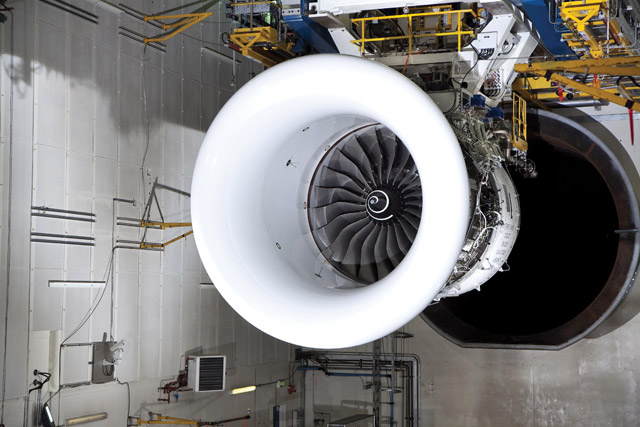Rolls-Royce's aero engine businesses turned in solid first-half growth, reflecting a buoyant civil aviation market and the company overcoming military budget cuts in North America and Europe.
Civil sales revenue was up by 6% to more than £3.2 billion ($4.9 billion), reflecting an 11% increase in deliveries, partly offset by an "adverse mix".
Engine deliveries totalled 346, compared to 313 in the first half of 2012, and a £112 million profit from the £1.5 billion sale to Pratt & Whitney of R-R's one-third share of International Aero Engines boosted operating profit (pre-financing) by 59% to £486 million.
Stripping out the IAE result would still leave profit up by 22% at £374 million.
 |
|---|
Rolls-Royce |
Despite pressure on government spending, military engines revenue increased by 9% to nearly £1.24 billion. This includes a 17% growth in original equipment revenue, driven by better mix and pricing, supported by a 1% aftermarket growth, particularly of T56 and AE spares for military transports, and also combat aircraft engine repairs. Segment operating profit was up a tenth to £211 million.
Although the defence segment order book finished the first half down by 4% year-on-year at £4.94 billion, owing to budget cuts by key European and North American customers, chief executive John Rishton said of unit prospects: "We continue to see opportunities both in developing economies and in our traditional markets."
The civil business, meanwhile, lifted its order book by 14% to £56.74 billion - nearly 82% of the group's entire backlog, including its marine, power generation and power systems businesses. The order book for the Trent XWB - the sole engine option for the Airbus A350, which made its maiden flight in June - stands at more than 1,400 engines, making it the fastest-selling Trent ever, according to R-R.
Civil and military aero engines accounted for 60% of the group's £7.32 billion revenue in the first half - and 92% of operating profit.
For the full year, R-R expects modest growth in revenue and strong growth in profit on the civil side. In defence, expectations for revenue growth remain modest, but the company has lifted its profit expectation from a modest reduction to broadly flat.
At the group level, revenue for the first half was up by 28% to £7.35 billion, and operating profit - stripping out gains made this half year and last on the IAE disposal, and reclassification of the Tognum diesel engines joint venture with Daimler as a subsidiary - was up by 32% to £756 million. However, net financing swung from a £55 million profit in the first half of 2012 to a staggering £1.38 billion cost in the first half of 2013, as R-R recorded a loss of more than £1 billion in fair value changes to derivative contracts. This left the group with a pre-tax loss for the half year of £491 million, compared with a £1.33 billion profit in the first half of 2012.
At £300 million, average net cash holdings for the period made a recovery of some £400 million compared with the year-ago period, to parity with 2011, but remain far from the £900 million balance of the first half of 2010.
Rishton adds: "It is clear we have a lot more to do on cost (and cash). Fortunately we have significant opportunities to improve both, but this will take time and firm resolve to deliver."
Source: Flight International























